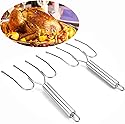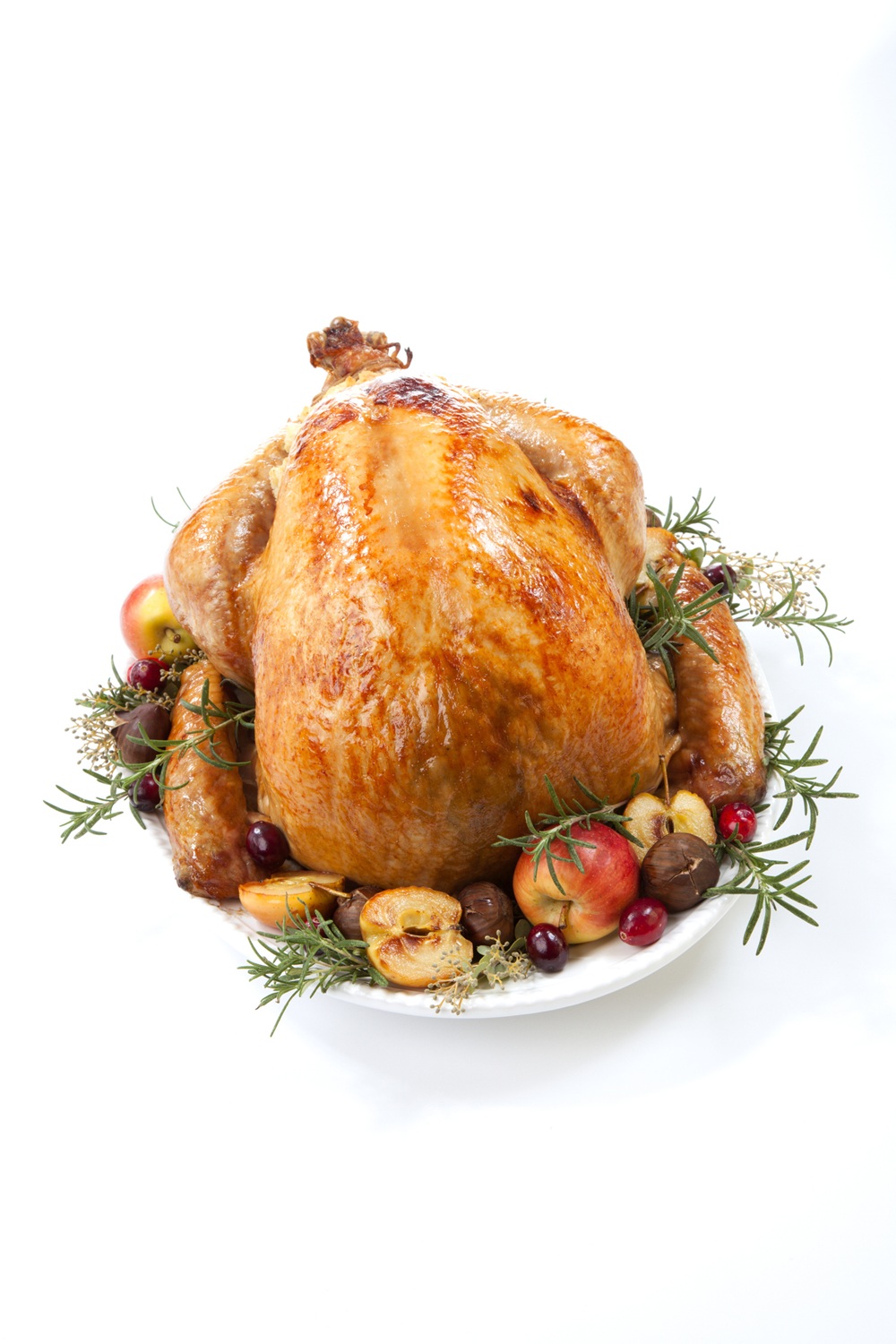This high heat roast turkey recipe delivers incredibly moist, tender meat with golden crispy skin in just 3 hours and 15 minutes, saving you precious oven time on Thanksgiving. Roasting at 450°F means your 20-pound bird finishes cooking faster than with traditional low-and-slow methods, which can take over 4 hours. The combination of high temperature and strategic foil tenting produces restaurant-quality results without any special equipment.
The beauty of this fast roast turkey method lies in its simplicity. You don't need fancy brining bags, butter-soaked cheesecloth, or constant basting - just a good roasting pan, aluminum foil, and confidence in your oven's heat. The turkey emerges with browned, crackling skin while the meat stays remarkably juicy.
Growing up, Thanksgiving morning always meant waking to the scent of butter and herbs wafting through the house. My grandmother would have her turkey in the oven before sunrise, basting every thirty minutes like clockwork. She'd stand there with her flowered apron, oven door open, spooning drippings over that massive bird. The kitchen stayed warm all morning while she worked.
The 1990s and Early 2000s Kitchen
These were the days when Martha Stewart dominated daytime television and Rachael Ray was just beginning to teach America that dinner didn't need to be complicated. The Food Network had launched only a few years earlier, bringing restaurant techniques into living rooms across the country.
Families were busier than ever. More women worked full-time, carpooling kids between soccer practice and piano lessons. The idea of spending six hours tending a turkey suddenly felt outdated. High-heat roasting answered that need perfectly. It cut cooking time nearly in half while delivering results that rivaled the traditional method.
This was also the era of convection ovens becoming standard in new homes, stainless steel appliances replacing almond and harvest gold, and granite countertops appearing in suburban kitchens. Cooks wanted efficiency without sacrificing quality. This recipe offered busy home cooks a legitimate shortcut that actually worked.
What Makes This High Heat Turkey Recipe Work
Essential Tools for This Recipe
1.
To make this high heat roast turkey successfully, you'll need a sturdy shallow roasting pan that can withstand 450°F temperatures. A heavy-duty roasting pan with rack ensures even air circulation around the turkey and prevents sticking. Look for one that's at least 16 inches long to comfortably accommodate a 20-pound bird.
2.
An instant-read meat thermometer takes the guesswork out of determining doneness. Digital versions give you a reading in seconds and help prevent overcooking. For this recipe, an oven-safe probe thermometer that stays in the turkey throughout cooking is ideal.
3.
Heavy-duty aluminum foil is essential for the tenting technique that prevents over-browning. Buy the extra-wide variety so you can cover the entire turkey with a single sheet. Regular foil works too, just overlap two sheets.
4.
A good pair of long silicone oven mitts protects your hands and forearms when handling a large roasting pan at 450°F. The extended length prevents burns when reaching into a hot oven to check on the turkey.
5.
For carving, invest in a sharp carving knife and large cutting board. A dedicated turkey carving set makes slicing through joints easier and ensures clean, attractive portions. The large board gives you plenty of space to work.

High Heat Roasted Turkey Recipe
Discover the time-saving secret that changed Thanksgiving cooking forever. This high heat roast turkey recipe delivers golden, crispy skin and incredibly moist meat in just 3 hours and 15 minutes by roasting at 450°F instead of the traditional low temperature method. Perfect for busy holiday cooks who want restaurant-quality results without hours of basting or complicated techniques, this straightforward recipe requires just three ingredients and produces a 20-pound bird that’s tender, flavorful, and impressive enough to be your centerpiece. The strategic foil tenting method prevents over-browning while the high heat creates natural moisture, giving you more time to focus on side dishes and family.
- Total Time: 3 hours 40 minutes
- Yield: 25 servings 1x
Ingredients
- 1 whole turkey (20 pounds), thawed if frozen
- 1 teaspoon salt
- 1/2 teaspoon pepper
Instructions
- Move oven rack to lowest position. Heat oven to 450°F. Prepare turkey for roasting as directed.
Fold wings across back of turkey so tips are touching. Rub both cavities lightly with salt and pepper. - Place turkey, breast side up, on rack in shallow roasting pan. Insert oven-proof meat thermometer so tip is in thickest part of inside thigh muscle and does not touch bone. (Do not add water or cover turkey.)
- Place turkey in oven with legs to the back of the oven to place them in hottest part of oven, if possible. Since the legs take longer to cook than the breast, this places them in hotter part of oven.
- Roast uncovered 2 hours 45 minutes to 3 hours 15 minutes, watching carefully. After roasting about 1 hour, place a tent of aluminum foil loosely over turkey when it begins to turn golden. When 2/3 done, cut band of skin or remove the turkey-holder that holds legs or the drumstick bone to allow inside of thighs to cook thoroughly.
- Turkey is done when thermometer reads 180°F and juice of turkey is no longer pink when you cut into center of thigh. The drumstick should move easily when lifted or twisted. If a meat thermometer is not used, begin testing for doneness after about 2 hours 15 minutes. When turkey is done, place on warm platter and cover with aluminum foil to keep warm. Let stand about 15 minutes for easiest carving.
Equipment

ThermoPro TP826 500FT Wireless Meat Thermometer
Buy Now →
Stainless Steel Turkey Lifter Forks
Buy Now →Notes
- Clean your oven beforehand, if needed, to keep it from smoking while cooking at high temperature.
- Wear long oven mitts and be watchful of splattering when checking on turkey.
- Place turkey in oven with legs to the back of the oven if possible. Since the legs take longer to cook than the breast, this places them in hotter part of oven.
- Prep Time: 10 minutes
- Cook Time: 3 hours 15 minutes
- Category: poultry, thanksgiving
- Method: oven
- Cuisine: American
Nutrition
- Calories: 275
- Sodium: 190mg
- Fat: 13g
- Saturated Fat: 4g
- Fiber: og
- Protein: 40g
- Cholesterol: 150mg
How to Make Perfect High Heat Roast Turkey
Recipe Variations, Serving Ideas, and Storage
Recipe Variations
Frequently Asked Questions
Never stuff a turkey that will be roasted at 450°F. The high temperature cooks the turkey too quickly for stuffing in the cavity to reach the safe temperature of 165°F. Bake your stuffing separately in a casserole dish for food safety and better texture.
Clean your oven thoroughly before attempting high heat roasting, as any residual grease or food particles will smoke at 450°F. Place a sheet pan on the rack below the turkey to catch drips, and ensure your kitchen exhaust fan runs throughout cooking. Adding 1/2 cup water to the bottom of the roasting pan can also reduce smoking.
No basting is required with this method. Opening the oven repeatedly to baste releases heat and extends cooking time. The high temperature creates its own moisture through rapid fat rendering, keeping the meat juicy without any additional attention.
If the turkey turns dark golden brown before the internal temperature reaches 180°F, tent it immediately with aluminum foil. You can also reduce the oven temperature to 400°F for the remaining cooking time. Every oven runs slightly differently, so watch your bird carefully.
Absolutely. Fresh turkeys often produce even better results with high heat roasting because they haven't been previously frozen. Just make sure to remove the giblets from the cavity and pat the turkey completely dry before seasoning and roasting.
Pierce the thickest part of the thigh with a fork. If the juices run clear (not pink) and the drumstick moves easily when lifted or twisted, the turkey is done. However, a meat thermometer is the most reliable method for ensuring both safety and quality.
Soggy skin usually results from too much moisture in the roasting pan or not drying the turkey thoroughly before cooking. Always pat the turkey completely dry with paper towels and avoid adding water to the pan. The foil tent should sit loosely over the bird, not tightly sealed.
This recipe keeps the turkey at 450°F throughout cooking, using foil to control browning rather than temperature reduction. Some cooks prefer to drop to 350°F after initial browning, but Betty Crocker's original method maintains the high heat for the fastest results.
Let the turkey rest for at least 15 minutes after removing it from the oven. This allows juices to redistribute throughout the meat. Tenting loosely with foil during resting keeps it warm. For very large birds, you can extend resting time to 20 or 30 minutes.
Remove the legs first by cutting through the joint where the thigh meets the body. Separate the drumsticks from the thighs. Then remove each breast half by cutting along one side of the breastbone and following the ribcage. Slice the breast meat against the grain for the most tender pieces.
Why This High Heat Method Changed Thanksgiving
For decades, conventional wisdom said turkeys needed low, slow roasting at 325°F for hours on end. Cooks accepted dried-out breast meat as inevitable, compensating with generous gravy and hoping the dark meat would stay moist. Then, in the 1990s, innovators challenged that thinking, proving that high heat actually produced superior results.
This fast roast turkey method caught on because it solved real problems. It freed up oven space for casseroles and pies. It reduced active cooking time when families were already stretched thin on Thanksgiving morning. Most importantly, it delivered genuinely better turkey with crackling crispy skin and meat so juicy it barely needed gravy.
What makes this recipe special isn't fancy ingredients or difficult techniques. It's the confidence to turn your oven to 450°F and trust the science of high heat cooking. That golden-brown turkey emerging from your oven in just over three hours tastes like Thanksgiving should: rich, savory, and worth the wait, even when the wait is shorter than you expected.
What's your favorite memory of Thanksgiving turkey? Did your family have special traditions around preparing or carving the bird? If you make this high heat roast turkey recipe, please leave a rating and review to help other home cooks!

0 comments